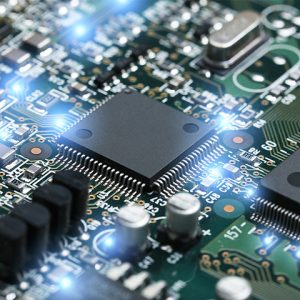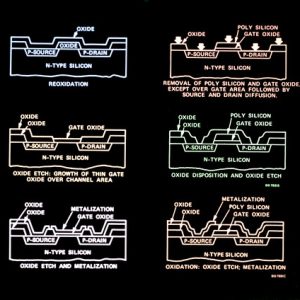Types of Patch Cords
A patch cord, or patch cable, is a short length of wire with connectors on both ends. They are used to connect network devices and help transfer data signals from one device to another.
They can be made with twisted pair copper cables or fiber optic cable, depending on the network’s requirements. They help ensure high data transmission speeds and maintain signal integrity.
Copper Patch Cords
Copper patch cords are the workhorses of Ethernet cabling systems. They connect network devices like switches, hubs and routers to each other, allowing communication signals to flow freely between them. They’re also used to connect equipment to a structured cabling system, such as wall outlets or patch panels.
These cables typically use stranded four-pair round cable, which is more flexible than solid cable and can handle greater amounts of bending. This superior flexibility also allows them to be easily dressed in cable trays, racks and enclosures where they’re often bent and manipulated. The wires in these cables are bundled into pairs and numbered, and the connector ends have a color code that indicates the wiring standard they’re based on (blue with white/blue, orange with white/orange, green with white/green, and brown with white/brown).
Most patch cords feature a snag-free latch to prevent tangles and allow for fast release when unplugging or changing out connections. Choosing quality copper patch cords, splicing and terminating them in the proper way, and working with a trusted assembly operation can help ensure that your patch cords deliver the performance you need for critical applications. For example, you want to ensure that the patch cords you purchase are made using good-quality components and assembled under optimal conditions in order to optimize the transmission of data signals.
Fiber Optic Patch Cords
Fiber optic patch cords are a crucial component of telecommunication networks. They are used to connect optical devices, such as switches, routers and transceivers, in a fiber optic network. A patch cord consists of a cable with connectors on both ends. The connectors can be either single- patchcord or multi-mode, depending on the type of network. The cables can also be terminated with different types of fiber connectors.
There are several types of fiber patch cords, and the choice depends on many factors, such as the network’s type and size, and what kind of connections are needed. It is important to choose the right type of patch cord, as a wrong choice can cause problems in the network. For instance, the wrong fiber type or the wrong connector type can cause data loss or a bad connection.
The most common type of fiber patch cord is the LC type, which has a connector on both ends of the cable. Other types of fiber patch cords include MU, MPO and ST. The LC 5G˴Fibre to the home type is often used in high-density applications because it provides an efficient way to wire the network and allows for easy changes to the wiring without having to use punch blocks or patch panels.
Another popular type of patch cord is the armored fiber patch cable. This type of cord is designed with a stainless-steel armor around the optical cable to protect it from shocks, strong vibration and other environmental conditions. It is available in both multi-mode and single-mode cables, and all of them are terminated with high-quality connectors that ensure minimal back reflection and high-speed transmission.
High Power Patch Cords
High power patchcords use special high power fibers and carefully prepared fiber endfaces to provide maximum laser coupling. They are designed for high power CW or pulsed laser applications. These patchcords can be made with multimode, single mode, polarization maintaining, double cladded or photonic crystal (“holey”) fibers.
In telecommunications and radio studios, patch cords allow equipment to be moved from one location to another without the need to disconnect and reconnect wired connections. They are typically plugged into numbered ports in a patch bay.
When connecting telecommunications devices or computers, it is important to choose the right type of patchcord for your application. Different types of patch cords have different features, and knowing the differences will help you make an informed decision.
Fiber patch cords (also known as fiber jumpers) are lengths of optical fiber cable terminated with a fiber optic connector on both ends. The most common type of fiber patch cords are LC to LC cables, but you can also find LC to SC, MTRJ, and ST fiber patch cords. There are also low insertion loss fiber patch cords that feature lower connector insertion losses than common fiber jumpers. Choosing the right type of fiber patch cord for your needs depends on several factors, including transmission medium and connector type.
Shielded Patch Cords
Protect your copper network from interference with shielded patch cords. They are ideal for use in EMI-prone environments such as schools, airports, retail stores and hospitality venues. These cables are constructed with a factory-injected, anti-snag slim strain relief boot and feature 50 micron gold plated contacts, affirming their superior signal clarity. They are a great choice to connect two patch panel ports or between a patch panel and a device or wall jack.
These snagless shielded Category 6 patch cables protect a high speed network from noise and electromagnetic interference. They are a great choice for voice, data and video distribution. They are made with noise protection shielded twisted pair wires that are individually bonded together to help maintain the twist-spacing of the cable, significantly reducing impedance and structural return loss. They meet all CAT6 TIA/EIA-568B component requirements and are RoHS compliant.
Our flat CAT6 shielded patch cables are perfect for connecting devices within limited networking areas like behind cubicles and furniture. These cables are a great way to provide connectivity in an area with limited space and they are available in a variety of lengths to accommodate any application.



